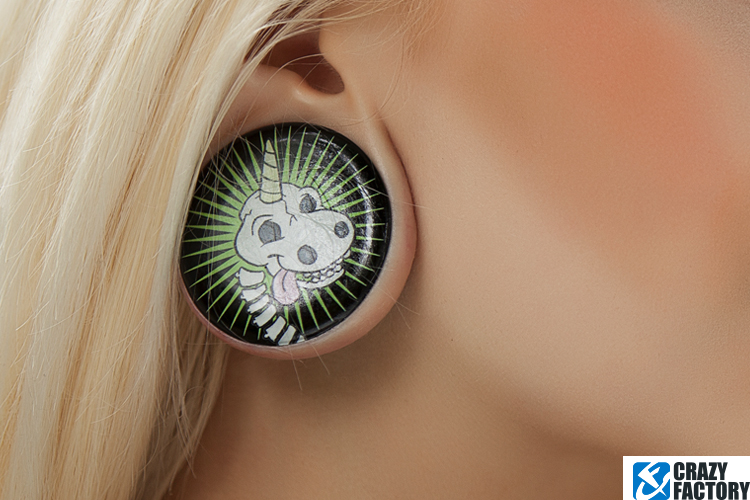Dehnung/en: Unterschied zwischen den Versionen
(Die Seite wurde neu angelegt: „<h4>Stretching</h4> <i>Piercing type</i><br> <br>When it comes to stretching, patience really is a virtue. You’ll need to allow yourself and your body plenty of time. Hygiene and aftercare are equally important, so the tissue stretches evenly and without scarring or getting infected and the result looks good. <br><br> Stretching is best done in small steps, with about six weeks between each o…“) |
|||
| Zeile 10: | Zeile 10: | ||
Stretched piercings have been a part of human culture for millennia. They go back at least as far as the new stone age, as we know from Austria’s famous Ötzi, who was mummified and buried in a glacier and rediscovered in 1991. Ancient Egyptian art also includes figures with stretched earlobes. | Stretched piercings have been a part of human culture for millennia. They go back at least as far as the new stone age, as we know from Austria’s famous Ötzi, who was mummified and buried in a glacier and rediscovered in 1991. Ancient Egyptian art also includes figures with stretched earlobes. | ||
<br><br> | <br><br> | ||
Some peoples in Africa and South America have been using lip plugs for thousands of years. Body modification, including stretched earlobes and in some cases nostril piercings, also has a long tradition in Asia. | Some peoples in Africa and South America have been using lip plugs for thousands of years. Body modification, including stretched earlobes and in some cases [[Special:MyLanguage/Nostril-Piercing|nostril piercings]], also has a long tradition in Asia. | ||
Aktuelle Version vom 28. September 2021, 06:09 Uhr
Stretching
Piercing type
When it comes to stretching, patience really is a virtue. You’ll need to allow yourself and your body plenty of time. Hygiene and aftercare are equally important, so the tissue stretches evenly and without scarring or getting infected and the result looks good.
Stretching is best done in small steps, with about six weeks between each one. Depending on the body part involved - earlobes are the most common, but nipple and genital piercings can also be stretched – the process is carried out using expanders, one to two millimetres at a time, to avoid tissue damage. It’s best done with the help and advice of an experienced piercer.
Stretched piercings have been a part of human culture for millennia. They go back at least as far as the new stone age, as we know from Austria’s famous Ötzi, who was mummified and buried in a glacier and rediscovered in 1991. Ancient Egyptian art also includes figures with stretched earlobes.
Some peoples in Africa and South America have been using lip plugs for thousands of years. Body modification, including stretched earlobes and in some cases nostril piercings, also has a long tradition in Asia.
